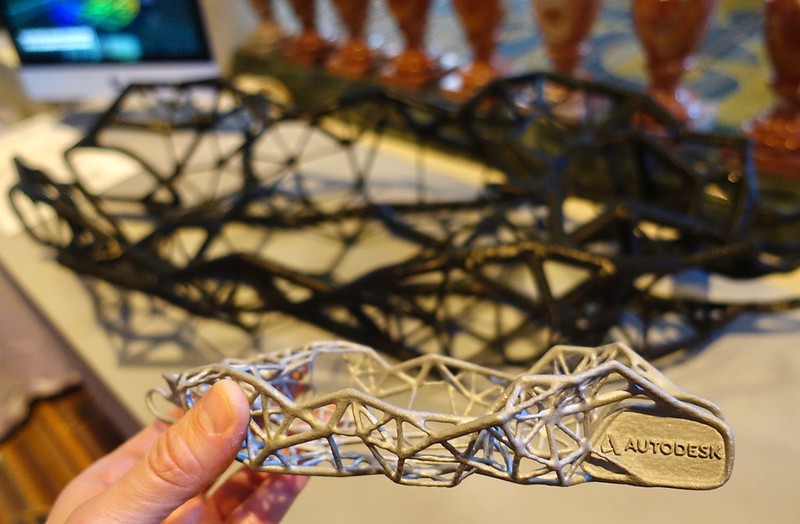Generative design
Contents |
[edit] Introduction
Generative design (or algorithmic design) is a design technique that takes a predetermined concept and quickly applies repetition to generate numerous possible solutions. Akin to traditional methods such as brainstorming or ‘napkin doodling’, generative design does not necessarily require technology, but in recent years, computers have often been used to speed the application of algorithms and refine the process.
[edit] History
Generative design is not a new theory. Its origins are not clearly documented, but it has been used since the 1970s as a way to approach complex design situations.
The demand for innovative solutions to design challenges has accelerated its adoption in architecture and construction. Improvements in affordable technology have also contributed to the growth of this design approach that can explore numerous possibilities in a relatively short period of time.
[edit] How generative design works
Generative design typically uses computer aided design (CAD) software to build on a basic concept and output a stream of (possibly unconventional) alternatives. The designer then inputs predetermined requirements and parameters into the program to improve the set of possible results and generate different designs more in line with feasible approaches. These results are then evaluated in a way that allows the designer to discard concepts that don’t work and generate an optimal solution.
The process includes the following steps:
- Generation.
- Analysis.
- Evaluation.
- Evolution.
- Exploration.
- Adoption.
With CAD-based version of generative design, the application of algorithms is automated, but it is up to the designer to evaluate the computer generated results and decide on the most precise option.
[edit] Related articles on Designing Buildings Wiki
Featured articles and news
Architects, architecture, buildings, and inspiration in film
The close ties between makers and the movies, with our long list of suggested viewing.
SELECT three-point plan for action issued to MSPs
Call for Scottish regulation, green skills and recognition of electrotechnical industry as part of a manifesto for Scottish Parliamentary elections.
UCEM becomes the University of the Built Environment
Major milestone in its 106-year history, follows recent merger with London School of Architecture (LSE).
Professional practical experience for Architects in training
The long process to transform the nature of education and professional practical experience in the Architecture profession following recent reports.
A people-first approach to retrofit
Moving away from the destructive paradigm of fabric-first.
International Electrician Day, 10 June 2025
Celebrating the role of electrical engineers from André-Marie Amperè, today and for the future.
New guide for clients launched at Houses of Parliament
'There has never been a more important time for clients to step up and ...ask the right questions'
The impact of recycled slate tiles
Innovation across the decades.
EPC changes for existing buildings
Changes and their context as the new RdSAP methodology comes into use from 15 June.
Skills England publishes Sector skills needs assessments
Priority areas relating to the built environment highlighted and described in brief.
BSRIA HVAC Market Watch - May 2025 Edition
Heat Pump Market Outlook: Policy, Performance & Refrigerant Trends for 2025–2028.
Committing to EDI in construction with CIOB
Built Environment professional bodies deepen commitment to EDI with two new signatories: CIAT and CICES.
Government Grenfell progress report at a glance
Line by line recomendation overview, with links to more details.
An engaging and lively review of his professional life.
Sustainable heating for listed buildings
A problem that needs to be approached intelligently.
50th Golden anniversary ECA Edmundson apprentice award
Deadline for entries has been extended to Friday 27 June, so don't miss out!
CIAT at the London Festival of Architecture
Designing for Everyone: Breaking Barriers in Inclusive Architecture.
Mixed reactions to apprenticeship and skills reform 2025
A 'welcome shift' for some and a 'backwards step' for others.

























